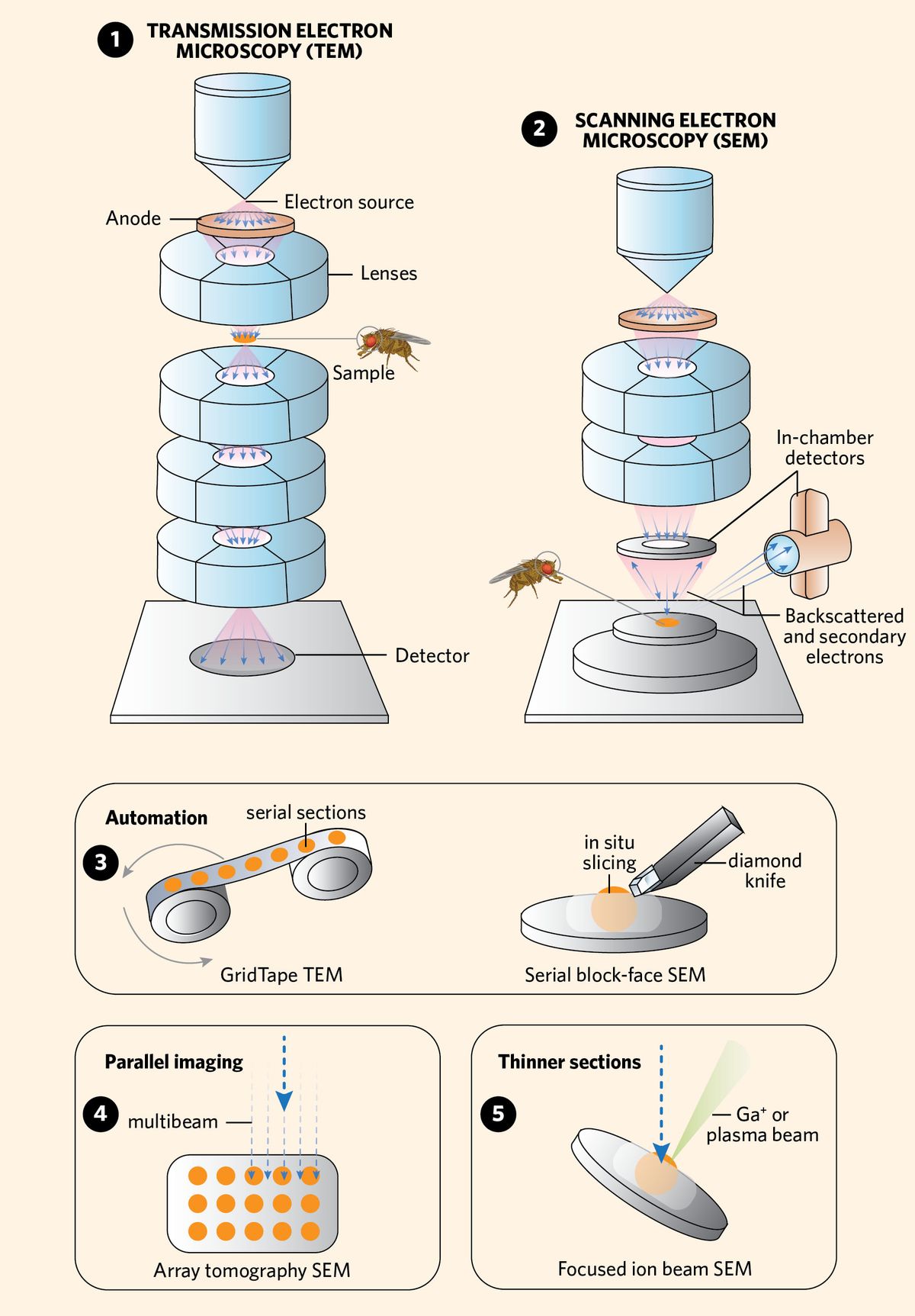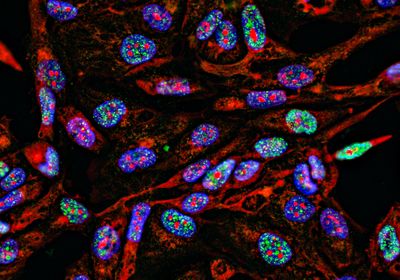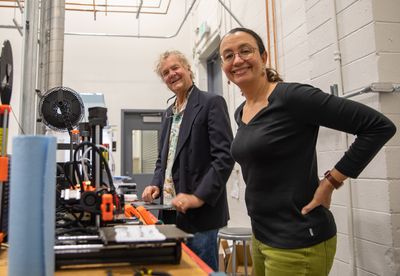Volume electron microscopy modalities are based on either transmission electron microscopy (TEM) or scanning electron microscopy (SEM).1 In TEM, electron beams pass through thin sections of samples and collect on a downstream detector (1). When the electron beam interacts with the sample for SEM, it produces backscattered electrons and secondary electrons, which are collected on in-chamber detectors (2). Automated serial sectioning onto grids or directly inside the imaging chamber speeds up sample preparation and reduces error (3). Multibeam SEM facilitates high-resolution, high-throughput imaging (4). Using an ion beam instead of a diamond knife allows scientists to remove ultra-thin sections that are approximately 8μm in thickness, which provides higher resolution and an improved signal-to-noise ratio (5).

Reference
- Peddie CJ, et al. Volume electron microscopy. Nat Rev Methods Primers. 2022;2:51.
Read the full story.





